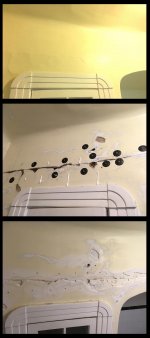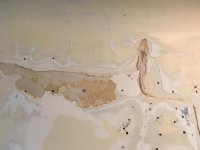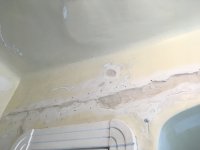Refreshing rental unit bathroom with plaster walls and latex paint. Quick sanded off any peeling paint and leveled previous crack repairs. Giving Plasters Magic a shot on some of these larger cracks followed by mesh and rolled-on skim coat of joint compound on the walls/ceiling. Looking for process advice.
Without sanding all the paint off, any need to prime the walls before skimming with compound - what about wiping with tsp or mixing some primer in with the compound before rolling it on? I've read of people thinning PVA glue as a primer before skimming...
I'm not a tradesmen and I'm not repairing with plaster, joint compound is a little more approachable. No vent in the bathroom and some spot peeling of several layers of paint, any issues with adhesion in this would-be wet area or will prime/paint after skimming be sufficient for sealing the bathroom? Paint/primer recommendations for wet areas, (it's a rental) Behr Premium/plus, semigloss sound good?
Plan to use premix compound or 45 minute thinned down, any tips are greatly appreciated and thanks in advance.
Without sanding all the paint off, any need to prime the walls before skimming with compound - what about wiping with tsp or mixing some primer in with the compound before rolling it on? I've read of people thinning PVA glue as a primer before skimming...
I'm not a tradesmen and I'm not repairing with plaster, joint compound is a little more approachable. No vent in the bathroom and some spot peeling of several layers of paint, any issues with adhesion in this would-be wet area or will prime/paint after skimming be sufficient for sealing the bathroom? Paint/primer recommendations for wet areas, (it's a rental) Behr Premium/plus, semigloss sound good?
Plan to use premix compound or 45 minute thinned down, any tips are greatly appreciated and thanks in advance.



